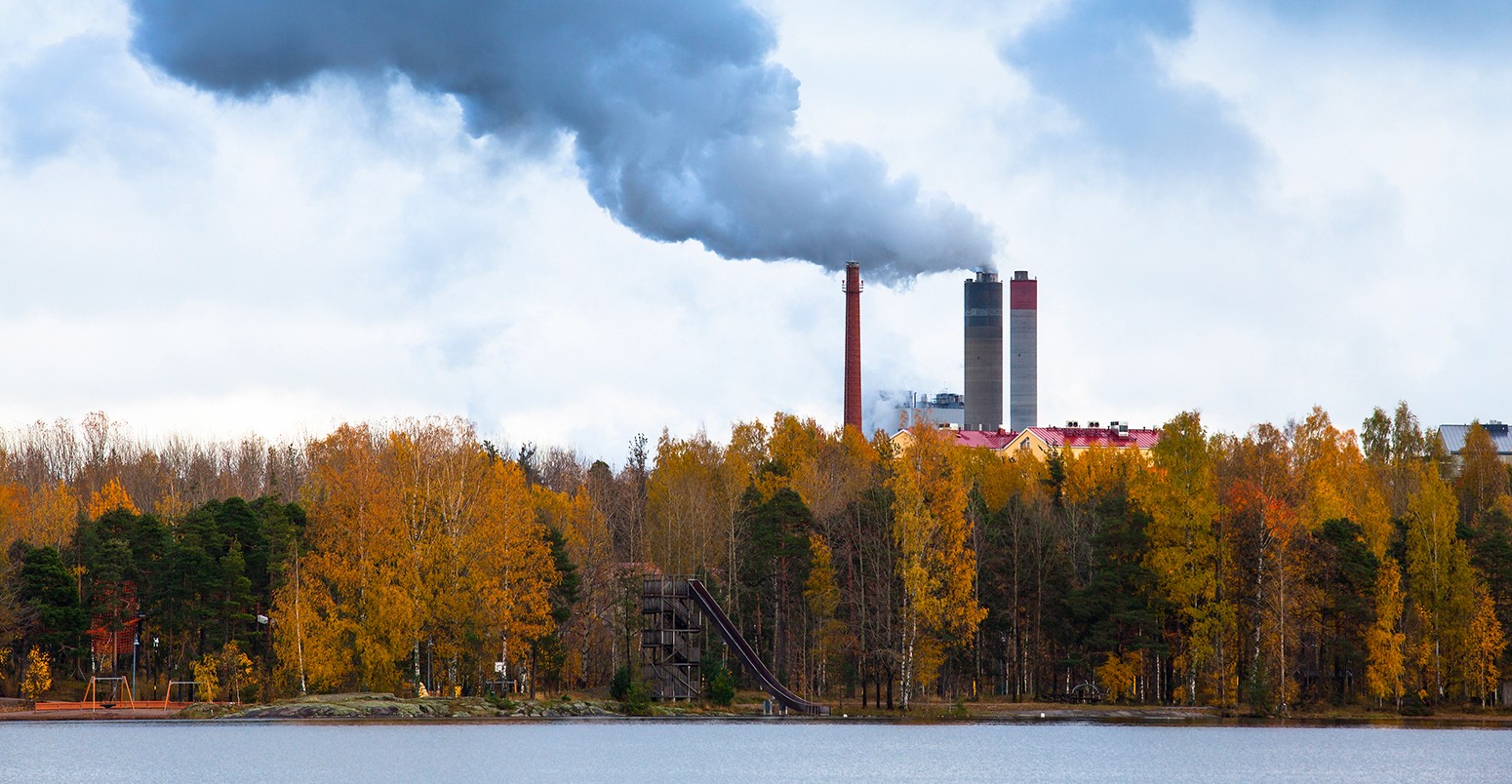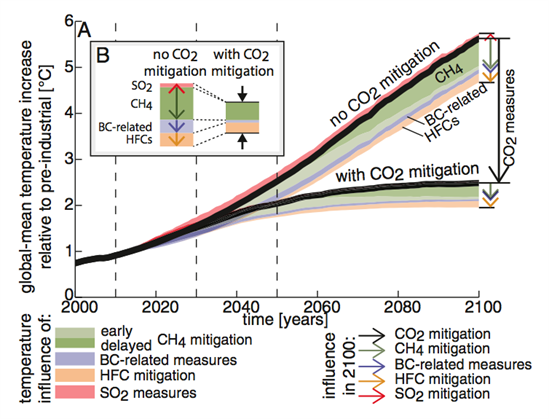
Untangling greenhouse gas emissions highlights the importance of carbon dioxide
Robert McSweeney
11.03.14Robert McSweeney
03.11.2014 | 8:38pmEfforts to limit climate change should focus on reducing emissions of carbon dioxide over any other greenhouse gas or air pollutant, a new study finds.
Short-lived
You might find you hear about efforts to cut carbon dioxide more than any other greenhouse gas (GHG). This is because carbon dioxide makes the biggest contribution of any of the gases emitted from human activities.
We emit more carbon dioxide than any other GHG, and once in the atmosphere it can stay there for centuries.
But there is also a group of ‘short-lived’ gases and pollutants that have an important warming effect. These include methane, ozone, hydrofluorocarbons (HFCs) and black carbon (soot).
A recent report by the UN Environment Programme (UNEP) recommended that reducing atmospheric concentration of these gases could “slow the rate of near-term climate change”, alongside other benefits such as improving air quality and public health.
Now a study, published in the Proceedings of the National Academy of Sciences, looks at the long-term impact on global temperatures of reducing short-lived gases. And the results suggest that carbon dioxide should remain central to GHG emission cuts.
Influence
Many GHGs and pollutants are emitted from the same sources. Burning coal, for example, releases carbon dioxide, nitrous oxides and black carbon. Cutting coal use to reduce emissions of one gas would mean a reduction in the others as well.
These overlaps between gases and pollutants are significant. For example, 70 per cent of black carbon emissions are related to energy use, such as burning diesel in cars or biomass for cookstoves.
The study looks at the impact on global temperatures of cutting these short-lived gases with, and without, similar reductions in carbon dioxide.
In a scenario of ‘no carbon dioxide mitigation’, global temperatures would rise by over five degrees by 2100, but cutting emissions of methane, HFCs and black carbon would reduce this rise by around 0.9°C.
However, when carbon dioxide mitigation was included and global temperatures only rose by just over two degrees, the influence of reducing the other pollutants reduced to around 0.5°C. You can see the difference in the figure below.
Difference between carbon dioxide mitigation and no mitigation for A) global temperature change, and B) the influence of non-carbon dioxide gases, for the 21st century. Rogelj et al. (2014).
This happens because even in the ‘no mitigation’ scenario some carbon dioxide emissions will be reduced as other gases are cut, the researchers say. So around half of the 0.9°C global temperature reduction was actually from reducing carbon dioxide.
The researchers suggest that by not considering how emissions of different gases overlap in this way, it is easy to overestimate the benefits of cuts to short-lived gases.
Rapid carbon dioxide reduction
The results of the study highlight the importance of mitigating carbon dioxide to limiting global temperature rise. Co-author Professor John Schellnhuber says in the press release for the research:
“The one and only thing that can avoid the bulk of risks that would come with unbridled climate change is rapid carbon dioxide reduction.”
Although there are near-term benefits from reducing short-lived gases and pollutants, this shouldn’t be at the expense of cutting carbon dioxide. As lead author, Dr Joeri Rogelj, argues in the press release:
“Although near-term action on short-lived climate forcers can help reduce warming in the coming decades and also provides other societal benefits, such as cleaner air, it will not buy us time for delaying the reductions in carbon dioxide emissions which are required to stabilize the climate at safe levels.”
As the newly-published IPCC synthesis report points out, limiting warming to two degrees means cutting greenhouse gas (GHG) emissions by 40 to 70 per cent by 2050. The results of this study suggest that carbon dioxide should continue to be the focus for reducing emissions.
Main image: Air pollution from smoke coming from three factory chimneys. Credit: De Visu/Shutterstock.com.
Rogelj et al. (2014) Disentangling the effects of CO2 and short-lived climate forcer mitigation, Proceedings of the National Academy of Sciences, doi/10.1073/pnas.1415631111 [This article is open access and therefore available to download for free]


